⚠️ Medical Disclaimer
Important: This content is for informational and educational purposes only. It should not be used as a substitute for professional medical advice, diagnosis, or treatment. Always consult with a qualified healthcare provider before making changes to your diet, taking supplements, or if you have questions about a medical condition. Never disregard professional medical advice or delay seeking it because of information you read here.
Last Updated on February 5, 2024 by Grace Oluchi
Hip dips, also known as hips divots or violin hips, refer to the inward curves on the sides of your body situated below each hip bone. Although they have become a target of the beauty industry’s unrealistic standards, hip dips are a natural occurrence determined by genetics and body structure, making them impossible to eliminate. This write-up provides an overview of hip dips, their causes, and exercises to promote healthy, strong hips.
What are Hip Dips?
Hip dips are the inward curves on the sides of the body located just below each hip bone. Also known as hip divots or violin hips, they are a natural occurrence in the human body. They are often a topic of conversation in the beauty industry as they have become a new “flaw” that needs fixing. However, they are completely normal and nothing to be ashamed of.
The causes are largely determined by genetics and body structure, making them impossible to eliminate. Each person’s body is different, and the structure of the pelvis and femur bones can affect its appearance. People with a wider pelvic bone structure may have less visible hip dips, while those with a narrower pelvic bone structure may have more prominent ones. Body fat distribution also affects the visibility of hip dips.
Hip dips can also be affected by muscle mass and distribution. The gluteal muscles, including the gluteus maximus, gluteus medius, and gluteus minimus, are located around the hip area and can affect its appearance. People with more muscle mass in the glutes may have less visible hip dips, while those with less muscle mass may have more visible ones.
The phenomenon of hip dips has also been linked to the way body fat is distributed. Hormones can influence where the body stores fat, and women tend to store more fat in the hip and thigh area. This can cause them to be more noticeable in women. Men, on the other hand, tend to store more fat in the abdominal area, making hip dips less visible.
Hip dips are inward curves on the sides of the body located below the hip bone. They are a natural occurrence and are determined by genetics, body structure, and muscle mass distribution. Although they have become a target of the beauty industry, hip dips are nothing to be ashamed of and cannot be eliminated through exercise or diet.
What are the Causes of Hip Dips?
Hip dips are the inward curves on the sides of the body located below each hip bone. They are a natural occurrence and can be caused by various factors, including:
- 1. Genetics: One of the primary causes of hip dips is genetics. The structure of the pelvis and femur bones can influence its appearance. People with a wider pelvic bone structure may have less visible hip dips, while those with a narrower pelvic bone structure may have more prominent hip dips.
- 2. Body fat distribution: The way body fat is distributed can affect the visibility of hip dips. Hormones play a significant role in where the body stores fat, and women tend to store more fat in the hip and thigh area. This can cause the hip dips to be more noticeable in women. Men, on the other hand, tend to store more fat in the abdominal area, making hip dips less visible.
- 3. Muscle mass distribution: The gluteal muscles, including the gluteus maximus, gluteus medius, and gluteus minimus, are located around the hip area and can affect the appearance of hip dips. People with more muscle mass in the glutes may have less visible hip dips, while those with less muscle mass may have more visible hip dips.
- 4. Body shape: The overall shape of the body can also influence the visibility of hip dips. People with an hourglass shape may have less visible hip dips, while those with a more rectangular shape or pear-shaped body may have more prominent hip dips.
- 5. Posture: Poor posture can also affect the appearance of hip dips. People who slouch or have poor spinal alignment may have more visible hip dips as this position can push the pelvis forward, making the dips more prominent.
Hip dips are a natural occurrence that can be influenced by genetics, body fat distribution, muscle mass distribution, body shape, and posture. While they have become a target of the beauty industry, hip dips are completely normal and nothing to be ashamed of.
Hip Dips are Normal.
Hip dips are a natural occurrence and should not be a cause for concern. They are a result of the individual’s unique body structure and are not indicative of their overall health status. Contrary to popular belief, the presence of hip dips does not necessarily reflect a person’s body fat percentage.
Thankfully, there has also been a recent movement towards body acceptance and self-love. Many social media influencers and celebrities have started embracing their hip dips as a normal and beautiful part of the human body. This shift in perspective also aims to empower individuals to love and accept their bodies for what they are, without feeling pressured to conform to societal beauty standards.
It is essential to recognize that hip dips are a normal and natural part of the body. Accepting and embracing them can help promote body positivity and self-love, leading to better overall mental and physical well-being.
Can you get Rid of Hip Dips?
Hip dips refer to the inward curve that occurs just below the hip bone, creating a dip between the hip bone and the thigh bone. While hip dips are a normal anatomical feature, some individuals may feel self-conscious about their appearance. There are also several methods that may help reduce the appearance of hip dips, including exercise, diet, and cosmetic procedures.
One way to reduce its appearance is through targeted exercise. Exercises that target the gluteal muscles, such as squats, lunges, and bridges, can help to build muscle in the hips and buttocks. Additionally, exercises that work the hip abductor muscles, such as side leg lifts, can help to strengthen and tone the muscles around the hip area, which may help to reduce the appearance of hip dips.
Another way to reduce the appearance of hip dips is through diet. Eating a balanced diet that is rich in protein, healthy fats, and complex carbohydrates can help to support muscle growth, which may help to fill out the hip area. Additionally, drinking plenty of water can help to flush out toxins and reduce bloating, which may help to reduce the appearance of hip dips.
In some cases, cosmetic procedures such as fat transfer or fillers may be used to reduce the appearance of hip dips. Fat transfer involves taking fat from another area of the body, such as the abdomen or thighs, and injecting it into the hip area to create a more rounded appearance. Fillers, on the other hand, involve injecting a filler material, such as hyaluronic acid, into the hip area to create a more rounded appearance.
It’s important to note that while these methods may help to reduce the appearance of hip dips, everyone’s body is different, and results may vary. Additionally, it’s important to consult with a qualified healthcare provider before starting any new exercise or diet regimen, or before undergoing any cosmetic procedures.
Think About Hip Function.
Instead of fixating on the appearance of your hips, prioritize your hip strength and stability. Your hips are composed of bones and muscles that are crucial for stabilizing your body and bearing weight. Boosting hip strength and stability can ease daily activities and lower injury risk. Though the hip structure can’t be altered, exercising the muscles surrounding it can enhance proper hip movement. These muscles include hip extensors, flexors, adductors, abductors, and lateral rotators. By working out these muscle groups, you can reinforce the stability and mobility of your hips and potentially diminish the look of hip dips by increasing muscle mass in the gluteus medius and nearby muscles.
10 Exercises to Strengthen Hips.
These exercises can help strengthen the muscles surrounding your hips and improve stability. Start with a few reps of each exercise and gradually increase as you get stronger. It’s important to listen to your body and stop if you feel any pain or discomfort.
- 1. Glute Bridge – This exercise targets the glutes, which are essential for hip stability and movement. Strengthening the glutes can also help improve posture and reduce lower back pain.
- 2. Clamshell – The clamshell targets the gluteus medius, which is important for stabilizing the hip joint. Strengthening this muscle can help prevent hip impingement and improve overall hip function.
- 3. Fire Hydrant – This exercise targets the hip abductors, which are responsible for moving the leg away from the body. Strengthening these muscles can help improve overall hip stability and reduce the risk of injury.
- 4. Lateral Leg Raise – This exercise targets the hip abductors, similar to the fire hydrant. It can also help improve balance and stability in the hip joint.
- 5. Single Leg Deadlift – This exercise targets the glutes, hamstrings, and lower back muscles. It can help improve overall hip stability and balance, as well as improve posture and reduce lower back pain.
- 6. Squats – Squats target the glutes, quadriceps, and hamstrings. They can help improve overall hip strength and stability, as well as improve mobility in the hip joint.
- 7. Lunges – Lunges target the glutes, quadriceps, and hamstrings, similar to squats. They can also help improve balance and stability in the hip joint.
- 8. Step Ups – Step ups target the glutes, quadriceps, and hamstrings, similar to squats and lunges. They can also help improve balance and coordination in the hip joint.
- 9. Wall Sit – This exercise targets the quadriceps and glutes. It can help improve overall hip strength and stability, as well as improve endurance in the hip joint.
- 10. Leg Press – The leg press targets the glutes, quadriceps, and hamstrings. It can help improve overall hip strength and stability, as well as improve mobility in the hip joint.
How to do These Exercises.
Here are how to do these 10 exercises for hip strengthening at home:
1. Glute Bridge
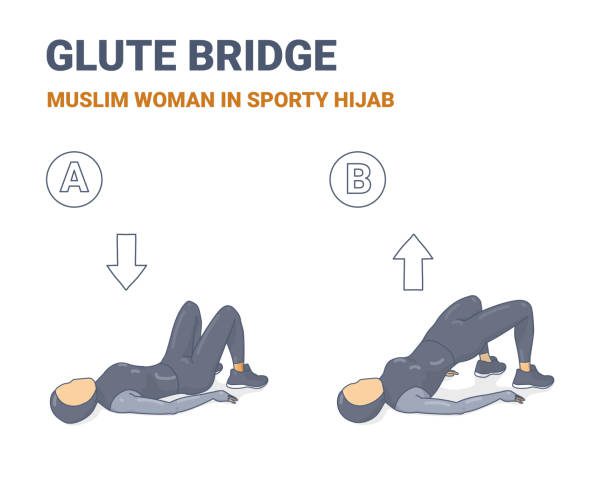

– Lie on your back with your knees bent and feet flat on the ground.
– Lift your hips up towards the ceiling, squeezing your glutes.
– Hold for a few seconds before lowering back down.
2. Clamshell
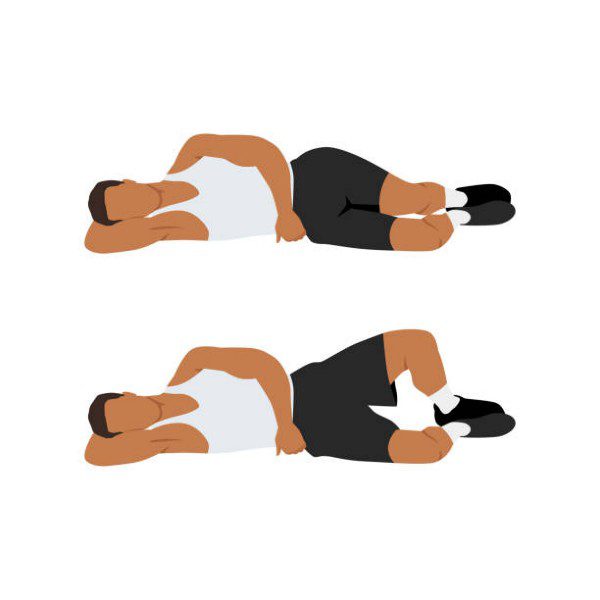

– Lie on your side with your knees bent and your feet together.
– Keeping your feet together, lift your top knee up towards the ceiling while keeping your ankles together.
– Lower your knee back down and repeat.
3. Fire Hydrant
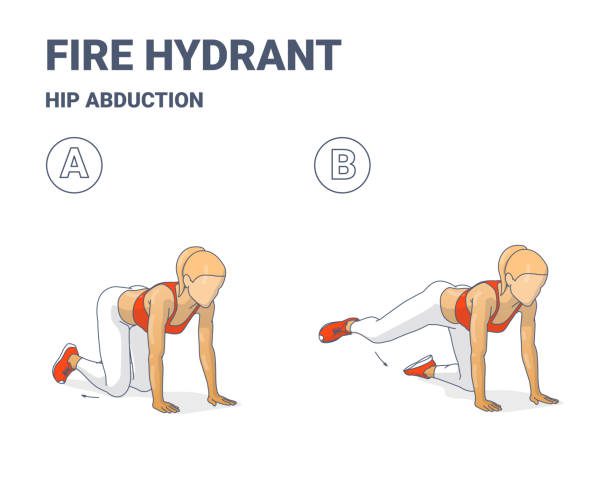

– Begin on your hands and knees, with your wrists directly under your shoulders and your knees under your hips.
– Keeping your knee bent, lift one leg out to the side, keeping your foot flexed.
– Lower your leg back down and repeat.
4. Lateral Leg Raise
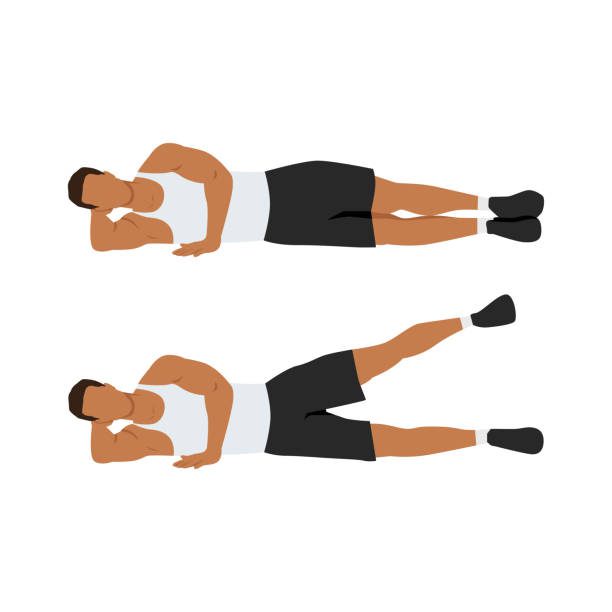

– Lie on your side with your legs straight.
– Lift your top leg up towards the ceiling, keeping it straight.
– Lower your leg back down and repeat.
5. Single Leg Deadlift
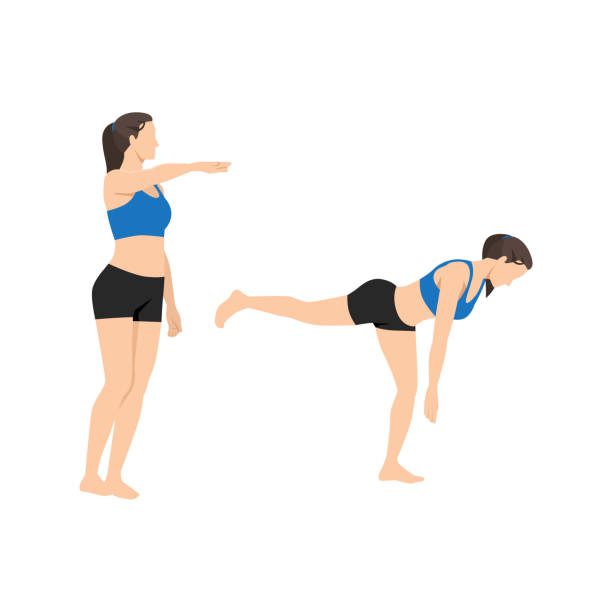

– Stand with your feet hip-width apart.
– Lift one leg off the ground and hinge forward at the hips, bringing your lifted leg behind you and reaching towards the ground with your opposite hand.
– Return to standing and repeat on the other side.
6. Squats
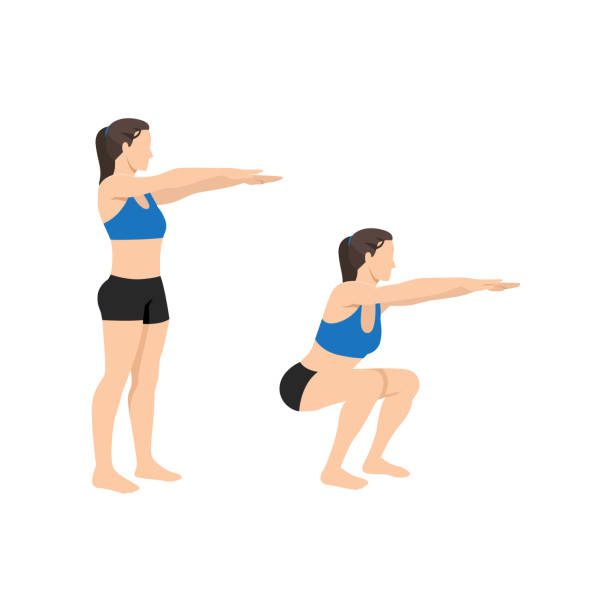

– Stand with your feet hip-width apart.
– Lower your hips down towards the ground, keeping your weight in your heels and your chest lifted.
– Return to standing and repeat.
7. Lunges
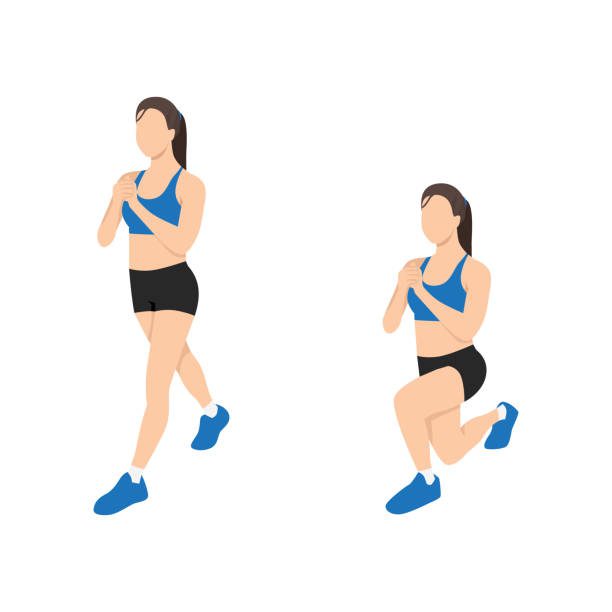

– Stand with your feet hip-width apart.
– Step one foot forward and lower your back knee towards the ground.
– Return to standing and repeat on the other side.
8. Step Ups
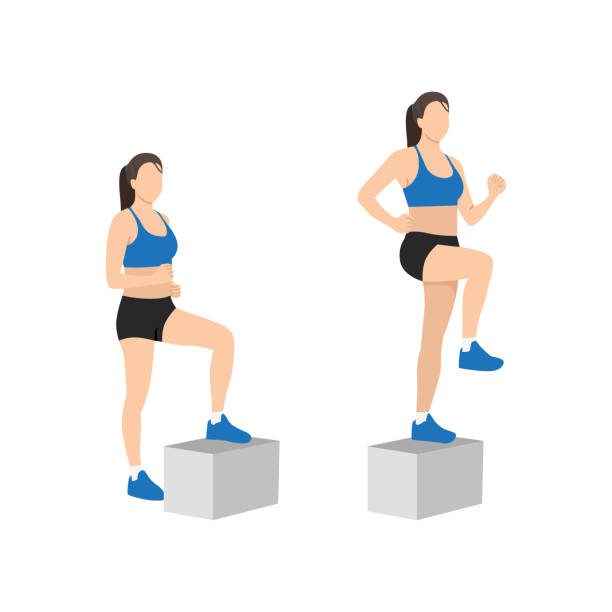

– Stand in front of a sturdy step or box.
– Step one foot up onto the step, then bring the other foot up to meet it.
– Step back down and repeat on the other side.
9. Wall Sit
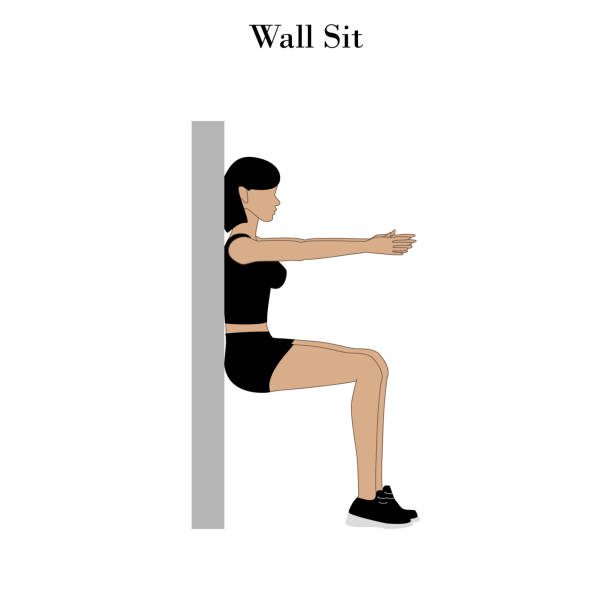

– Stand with your back against a wall and your feet hip-width apart.
– Slide down the wall until your thighs are parallel to the ground.
– Hold for as long as you can.
10. Leg Press
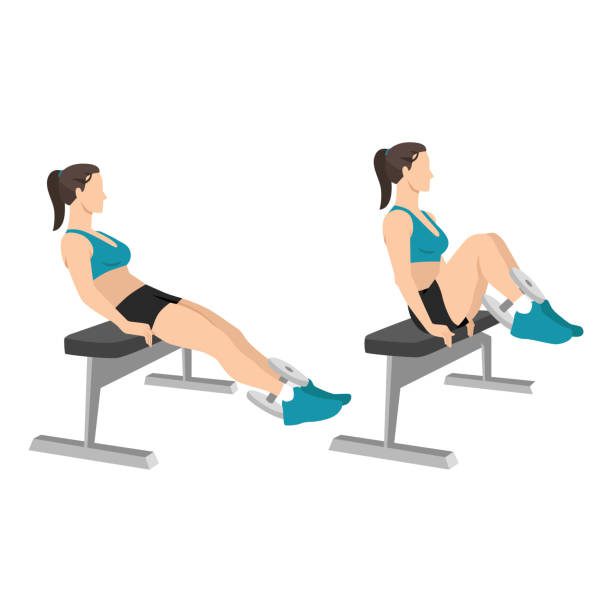

– Lie on your back with your knees bent and feet flat on the ground.
– Place a small ball or pillow between your knees.
– Squeeze your knees together, pressing into the ball or pillow.
– Release and repeat.
The Key Takeaway.
Hip dips, also known as violin hips or high hip dips, are a natural variation in body shape characterized by inward curves on the hips just below the hip bone. They are caused by the shape of the pelvic bone, and despite being a common concern among women, cannot be completely eliminated through exercise or diet. Hip dips are not a medical condition and are not associated with any health risks, and learning to love and embrace them as part of one’s unique body shape can help promote positive body image and self-esteem.
A Message From Medspurs.
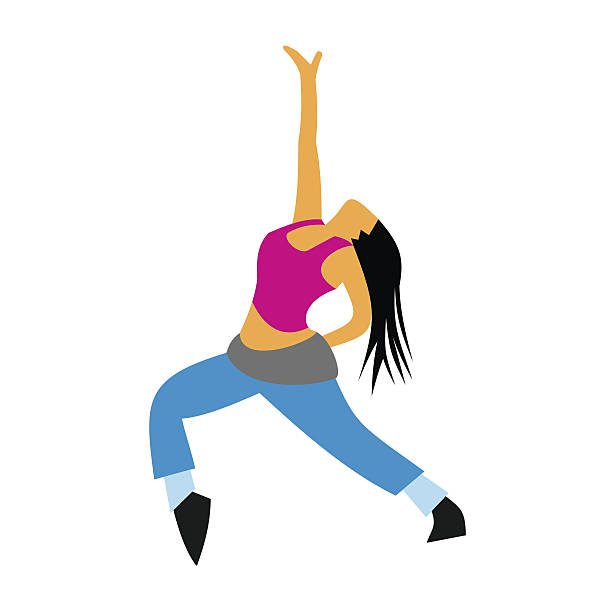

Dear reader,
I understand that you may be feeling self-conscious about your hip dips, but I want you to know that they are a completely normal and natural part of the body. As a doctor, it is my duty to remind you that no two bodies are the same, and there is no such thing as a perfect body.
Your worth and beauty are not determined by the shape of your body. Instead, focus on taking care of yourself and your health. Exercise and eat well to feel strong and energized, but not to change your body to conform to unrealistic standards.
Remember that you are unique and beautiful in your own way, and I hope that you can learn to love and embrace all aspects of yourself, including your hip dips.
Sincerely,
Grace.

